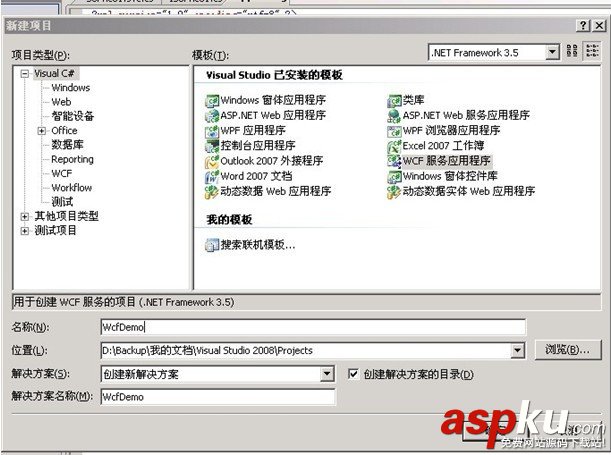本文实例讲述了C#动态执行批处理命令的方法。分享给大家供大家参考。具体方法如下:
C# 动态执行一系列控制台命令,并允许实时显示出来执行结果时,可以使用下面的函数。可以达到的效果为:
持续的输入:控制台可以持续使用输入流写入后续的命令
大数据量的输出:不会因为大数据量的输出导致程序阻塞
友好的 API:直接输入需要执行的命令字符串即可
函数原型为:
复制代码代码如下:
/// <summary>
/// 打开控制台执行拼接完成的批处理命令字符串
/// </summary>
/// <param name="inputAction">需要执行的命令委托方法:每次调用 <paramref name="inputAction"/> 中的参数都会执行一次</param>
private static void ExecBatCommand(Action<Action<string>> inputAction)
/// 打开控制台执行拼接完成的批处理命令字符串
/// </summary>
/// <param name="inputAction">需要执行的命令委托方法:每次调用 <paramref name="inputAction"/> 中的参数都会执行一次</param>
private static void ExecBatCommand(Action<Action<string>> inputAction)
使用示例如下:
复制代码代码如下:
ExecBatCommand(p =>
{
p(@"net use //10.32.11.21/ERPProject yintai@123 /user:yt/ERPDeployer");
// 这里连续写入的命令将依次在控制台窗口中得到体现
p("exit 0");
});
{
p(@"net use //10.32.11.21/ERPProject yintai@123 /user:yt/ERPDeployer");
// 这里连续写入的命令将依次在控制台窗口中得到体现
p("exit 0");
});
注:执行完需要的命令后,最后需要调用 exit 命令退出控制台。这样做的目的是可以持续输入命令,知道用户执行退出命令 exit 0,而且退出命令必须是最后一条命令,否则程序会发生异常。
下面是批处理执行函数源码:
复制代码代码如下:
/// <summary>
/// 打开控制台执行拼接完成的批处理命令字符串
/// </summary>
/// <param name="inputAction">需要执行的命令委托方法:每次调用 <paramref name="inputAction"/> 中的参数都会执行一次</param>
private static void ExecBatCommand(Action<Action<string>> inputAction)
{
Process pro = null;
StreamWriter sIn = null;
StreamReader sOut = null;
try
{
pro = new Process();
pro.StartInfo.FileName = "cmd.exe";
pro.StartInfo.UseShellExecute = false;
pro.StartInfo.CreateNoWindow = true;
pro.StartInfo.RedirectStandardInput = true;
pro.StartInfo.RedirectStandardOutput = true;
pro.StartInfo.RedirectStandardError = true;
pro.OutputDataReceived += (sender, e) => Console.WriteLine(e.Data);
pro.ErrorDataReceived += (sender, e) => Console.WriteLine(e.Data);
pro.Start();
sIn = pro.StandardInput;
sIn.AutoFlush = true;
pro.BeginOutputReadLine();
inputAction(value => sIn.WriteLine(value));
pro.WaitForExit();
}
finally
{
if (pro != null && !pro.HasExited)
pro.Kill();
if (sIn != null)
sIn.Close();
if (sOut != null)
sOut.Close();
if (pro != null)
pro.Close();
}
}
/// 打开控制台执行拼接完成的批处理命令字符串
/// </summary>
/// <param name="inputAction">需要执行的命令委托方法:每次调用 <paramref name="inputAction"/> 中的参数都会执行一次</param>
private static void ExecBatCommand(Action<Action<string>> inputAction)
{
Process pro = null;
StreamWriter sIn = null;
StreamReader sOut = null;
try
{
pro = new Process();
pro.StartInfo.FileName = "cmd.exe";
pro.StartInfo.UseShellExecute = false;
pro.StartInfo.CreateNoWindow = true;
pro.StartInfo.RedirectStandardInput = true;
pro.StartInfo.RedirectStandardOutput = true;
pro.StartInfo.RedirectStandardError = true;
pro.OutputDataReceived += (sender, e) => Console.WriteLine(e.Data);
pro.ErrorDataReceived += (sender, e) => Console.WriteLine(e.Data);
pro.Start();
sIn = pro.StandardInput;
sIn.AutoFlush = true;
pro.BeginOutputReadLine();
inputAction(value => sIn.WriteLine(value));
pro.WaitForExit();
}
finally
{
if (pro != null && !pro.HasExited)
pro.Kill();
if (sIn != null)
sIn.Close();
if (sOut != null)
sOut.Close();
if (pro != null)
pro.Close();
}
}
希望本文所述对大家的C#程序设计有所帮助。



















